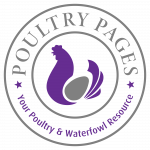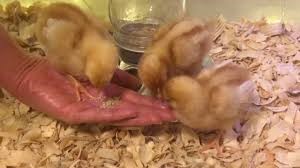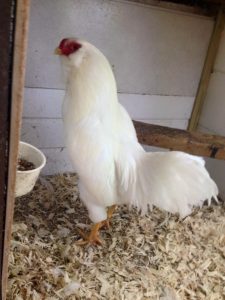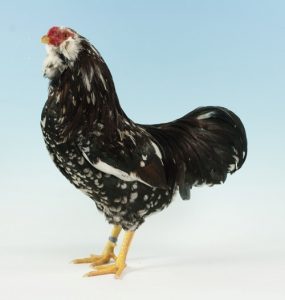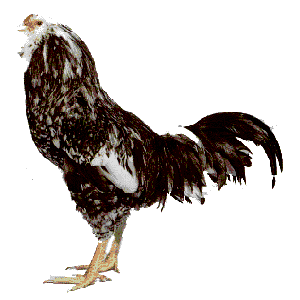
Orloff Overview
The Russian Orloff Chicken is a large slow-growing bird with a wide genetic diversity and an attractive variety of feather colors. The Russian Count Alexey Orloff-Chesmensky (1737 -1808) is said to have imported the original breeding stock from Gilan in Persia (modern day Iran).
The Count was fond of cockfighting and also imported English Gamecocks into Russia, which were bred with the Persian Gilan chickens. Additionally The Count is believed to have introduced desirable breed characteristics from Ushanki, Malay, Bruge, Belgian Game, a bearded European Spangled breed and Thuringian birds, to enable The Orloff to survive the extreme cold and harsh conditions of Russian winters.
The Orloff is quite capable of continuing to lay eggs even when winter conditions start. And surviving in these cold conditions when other breeds of chicken would simply die.
It is the only Russian breed of chicken found in America since 1870 and is noted for its calm temperament. In 1875 The Russian Orloff breed was recognized by The American Poultry Association.
By the 1890s The Russian Orloff had arrived in the UK and Europe, with some males weighing up to 4.4 kg (9.7 pounds). Bantams were bred in Germany in the early 1900s and a Bantam Orloff male weighs around 1 kg (35 ounces).
This large bird was primarily bred for meat production, naturally growing a good layer of fat and warm dense plumage to protect the bird from extreme cold. In the 21st Century, Orloffs are mostly kept as ornamental chickens, as their slow growth rate and reduced egg production after their pullet year, means they cannot compete with faster developing breeds.
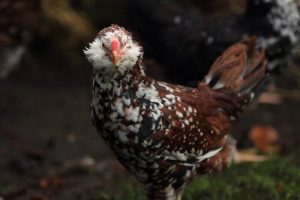
Sometimes in the offspring of Orloffs there may be individual birds with traits of The Gilan and Old English Game breeds. Orloffs are not fussy about food and happy to forage outside eating large quantities of juicy green shoots and insects.
Good feathering and insulating body fat coverage on adult birds gives them the ability to withstand cold winters, if adequately fed, and be outside for as many months as possible. Unless it is extremely cold Orloffs’ small sized combs and wattles do not usually freeze.
Orloffs are not heavy layers, but in their pullet year will lay reasonable quantities of medium size light brown/ivory eggs.
Orloffs are available in the USA, UK and Europe and are suitable for dual egg and meat production. Although some breeders claim their meat can be quite hard. These slow maturing birds are often kept by backyard chicken enthusiasts as an ornamental bird, for their good looks, easy going temperament and general robustness.
Weight
Mature large hens will typically weigh around 6.5 pounds (3kg) and can be up to 17 inches (43 cms) tall. Male roosters can weigh up to 9.7 pounds (4.4 kg) and be over 20 inches (50 cms) tall.
Bantam size birds are very popular. A bantam cock will typically weigh just under 35 ounces (1 kg) and a bantam hen will weigh just under 30 ounces (.85 kg).
Eggs
Size
Eggs can be medium to large in size with an average weight of 58g (2 oz).
Color
Eggs range in color from light brown, pale white to speckled
Production per year
160 to 180 eggs per year
When do they start laying eggs?
From 7 months
Orloff Characteristics
Temperament / Are they good as pets?
These are a large-sized bird who are noted for being relatively docile. However, like any chicken breed they can become competitive and squabble if food or space is in short supply.
Bantam sized birds are currently the most popular with backyard breeders.
How do I tame Orloff chickens?
The best way to tame a chicken is to handle it when it is still young; this gets your chickens used to people. If you have older chickens that need taming, try feeding them out of your hand regularly.
How many do I need to buy?
2 chickens is the absolute minimum you need for a flock, we recommend around 5 as a small flock number. The ideal ratio for Orloffs is one cockerel to 5 hens.
How much space do they need?
As these are large sized birds, ideally 6 square feet per mature bird in a coop. In a run around 25 square feet minimum per bird. Orloffs love to be outside foraging for food. Luckily Orloffs don’t fly much, unless in danger, so high -level containment fencing above 6 feet (182 cms) is not necessary. Some backyard flocks are kept in large sheds, rather like turkey flocks.
Will they mix with my other chickens?
In general Orloffs get along well with other breeds of chickens, but if bullied by other more aggressive birds they will stand their ground and defend themselves. Orloffs and Bantams will get along fine, as long as they are not too closely confined and there is adequate room for the Bantams to get out from under foot of the larger birds.
Appearance
Adult Orloff Chickens are available with the following feather coloring, which should be ‘hard’ with a lustrous healthy shine and a thickly feathered neck:
~ Black (quite rare now)
~ White Orloffs are highly sought after, due to their elegant looks
~ Mahogany/Red with black tail feathers
~ Spangled is the most popular coloring
~ Black Mottled
~ Cuckoo
The beak is yellow and eyes are reddish dark bay. Shanks and toes are usually yellow or horn ivory color. Feather coloring in chicks is sometimes hard to discern and not clearly defined until they are several months old.
The color of the skin is yellow giving a ‘corn fed’ appearance as a table roasting bird. The cushion or strawberry comb, wattles and earlobes are all very small and bright red in color.
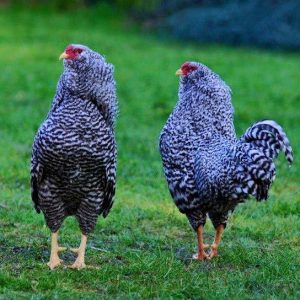
Feeding
What should I feed them?
When you first get your chickens home you should feed them growers mash, as it has a higher percentage of protein (19%) and is refined so that it can be easily ingested. You should feed them growers mash up until 6 weeks where they should be fed chicken pellets which is just feed in pellet form, this has between 15-16% protein. At 18 weeks your chickens need more nutrients to help with egg production so slowly start feeding them layers mash or pellets which has around 16% protein.
Chickens will need access to fresh drinking water all day long, they will prefer cool drinking water, no one is quite sure why maybe it’s a prehistoric throwback. As Orloffs are large sized birds it is important to have the feed and water at the proper height for all birds in the pen. Ideally feed and water should be at back level. If the water is too low down, in order to accommodate bantams, Orloffs may scratch litter into it and the water will go bad quickly.
Your chickens also need grit to help with egg production, so make sure there is always some within easy access to them at all times.
Orloffs like a perch height of between 2 and 4 feet off the ground to feel safe and secure. It is important that chickens have enough ‘uncrowded’ space to perch comfortably, as an unhappy and stressed chicken won’t lay many eggs and will be more prone to squabbling with other members of the flock.
How much should I feed them?
Orloff Chickens are active and hungry birds, but you cannot force feed them to accelerate growth when young; you have to patiently build the frame first and then put weight on using top quality feed. They will eat anywhere between 3.5 oz (99g) and 6 oz (170g) a day, but on average breeders feed their chickens 5 oz (140g) a day.
Start by feeding them this and then adjust the weight of feed around how much they consume. You can leave the feed in a feeder for them to eat whenever they please or you can give them set meal times. Orloff Chickens love to forage outside for grubs, green shoots, seeds and bugs.
Your chickens also need grit to help with egg production, so make sure there is always some easily accessible to them at all times.
What can’t they eat?
Chocolate and beans are the two main foods that shouldn’t be eaten by chickens. The phytohemagglutinin in beans can lead to fatalities and the theobromine in chocolate can cause heart problems. Moldy food that has bad bacteria in it should not be fed to chickens as it can make them very unwell. For this reason, it is illegal to feed your chickens leftovers in the UK.
What do I need to keep chickens?
The most essential item you need to keep chickens is a coop, which should ideally be .5 m2 or 5 square feet per chicken. Their run needs 25 square feet per chicken. In the coop they should have a perch to sleep on and a wooden laying box for their eggs.
You should invest in a sunken fence to go over and around the coop to keep them safe at night. Find a water bowl which they can’t stand in or push over and place it in the shade, so the water doesn’t get too warm. Feed and water for Orloff Chickens are best placed off the ground, at around the ‘back’ height of the bird. Raised feed and water bowl holders are easily obtained.
